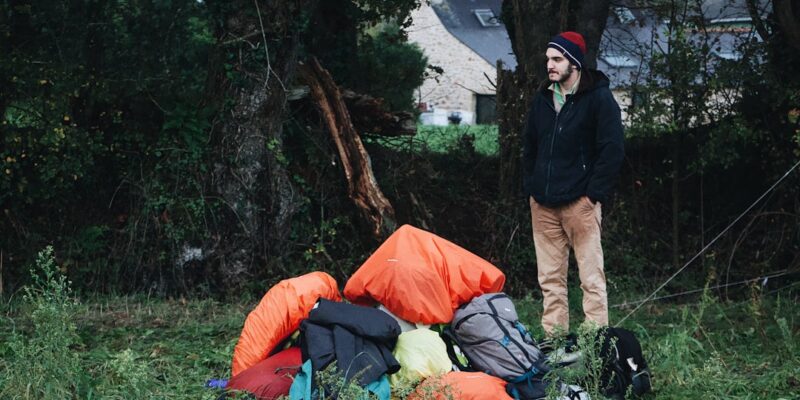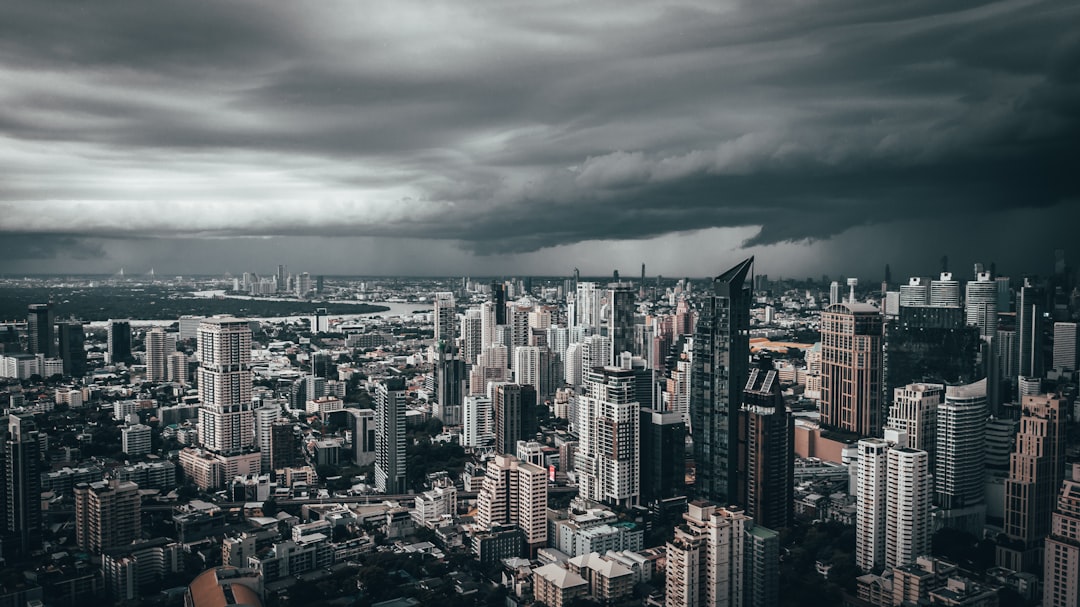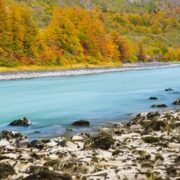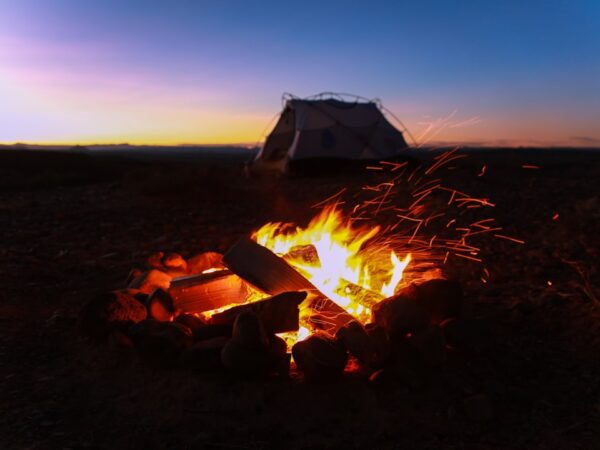
Wilderness Camping: Essential Survival Skills
Wilderness camping and survival skills are essential for anyone who enjoys spending time in the great outdoors. Whether you are an avid hiker, backpacker, or simply enjoy camping in remote areas, having the knowledge and skills to survive in the wilderness is crucial. Wilderness camping refers to camping in remote, undeveloped areas, away from the amenities and conveniences of civilization. Survival skills, on the other hand, are the techniques and knowledge necessary to sustain oneself in the wilderness, including finding food, water, shelter, and navigating through unfamiliar terrain.
Learning wilderness camping and survival skills is important for several reasons. First and foremost, it ensures your safety and well-being when venturing into remote areas. Knowing how to find food, water, and shelter can mean the difference between life and death in a survival situation. Additionally, having these skills gives you the confidence to explore new areas and take on more challenging adventures. It allows you to fully immerse yourself in nature without relying on modern conveniences.
There are numerous benefits to wilderness camping and survival skills. One of the main benefits is the opportunity to disconnect from the fast-paced world and reconnect with nature. Spending time in the wilderness allows you to escape the stresses of everyday life and find peace and tranquility in nature. It also provides a sense of self-reliance and independence, as you learn to rely on your own skills and resources for survival. Furthermore, wilderness camping can be a great way to bond with friends or family members, as you work together to overcome challenges and enjoy the beauty of nature.
Key Takeaways
- Wilderness camping and survival skills are essential for anyone planning to spend time in the great outdoors.
- Understanding basic survival needs such as shelter, water, and fire is crucial for staying safe in the wilderness.
- Essential gear for wilderness camping includes a tent, sleeping bag, water filter, and first aid kit.
- Finding and building shelter in the wilderness requires knowledge of natural materials and basic construction techniques.
- Starting a fire in the wilderness requires proper preparation, including gathering dry kindling and using a fire starter.
Understanding Basic Survival Needs in the Wilderness
When it comes to surviving in the wilderness, understanding your basic needs is crucial. The rule of threes is a helpful guideline for prioritizing these needs. According to this rule, you can survive for approximately three minutes without air, three hours without shelter in extreme weather conditions, three days without water, and three weeks without food. This rule emphasizes the importance of prioritizing your needs in a survival situation.
Air is obviously the most immediate and critical need, but assuming you have access to breathable air, shelter should be your next priority. Shelter protects you from the elements and helps regulate your body temperature. In extreme weather conditions, exposure can lead to hypothermia or heat stroke, both of which can be life-threatening. Building or finding a shelter should be your first task in a survival situation.
Water is another essential need in the wilderness. Without access to clean drinking water, dehydration can set in quickly, leading to weakness, confusion, and eventually death. It is important to know how to find and purify water sources in the wilderness.
Food is the least immediate need in a survival situation, as the body can survive for weeks without it. However, finding food is still important for long-term survival. Knowing how to identify edible plants and animals in the wilderness can help sustain you until rescue or until you are able to find your way back to civilization.
Essential Gear for Wilderness Camping and Survival
Having the right gear is essential for wilderness camping and survival. Here are some of the key items you should have in your pack:
1. Clothing and footwear: Dressing appropriately for the weather conditions is crucial for staying comfortable and safe in the wilderness. Layering your clothing allows you to adjust your insulation as needed. Sturdy, waterproof footwear is also important for protecting your feet and preventing blisters.
2. Shelter and bedding: A lightweight tent or tarp can provide protection from the elements and insects. A sleeping bag or sleeping pad will help insulate you from the ground and keep you warm at night.
3. Navigation tools: A compass and map are essential for navigating through unfamiliar terrain. GPS devices can also be helpful but should not be relied upon as the sole means of navigation.
4. Fire-starting tools: Fire is essential for warmth, cooking, and signaling for help. Carry waterproof matches, a lighter, and fire-starting materials such as cotton balls soaked in petroleum jelly.
5. Water filtration and purification tools: Having a water filter or purification tablets is crucial for ensuring that the water you drink is safe. Boiling water is also an effective method of purification.
6. First aid kit: A well-stocked first aid kit is essential for treating minor injuries and illnesses in the wilderness. It should include items such as bandages, antiseptic ointment, pain relievers, and any necessary prescription medications.
7. Food and cooking tools: Pack lightweight, non-perishable food items that are easy to prepare. A camping stove or portable grill can be used for cooking meals.
Finding and Building Shelter in the Wilderness
| Shelter Type | Pros | Cons |
|---|---|---|
| Debris Hut | Easy to build, good insulation | Requires a lot of materials, time-consuming to build |
| Lean-to | Quick to build, provides good protection from wind and rain | May not provide enough insulation, requires a lot of space |
| Tarp Shelter | Easy to set up, lightweight | May not provide enough protection from wind and rain, may require additional support |
| Cave | Natural shelter, provides good protection from elements | May not be available, may have safety concerns |
Finding or building a shelter is one of the first tasks you should undertake in a survival situation. Shelter provides protection from the elements and helps regulate your body temperature. There are several types of natural shelters you can look for in the wilderness, including caves, overhangs, fallen trees, and thick vegetation.
If you are unable to find a natural shelter, you can build one using materials found in the wilderness. One of the simplest types of shelters to build is a lean-to. To construct a lean-to, find a sturdy tree or large rock to serve as a support. Lean branches or logs against the support to create a sloping roof. Cover the roof with leaves, moss, or other vegetation to provide insulation and protection from rain.
When building a shelter, it is important to consider your comfort and safety. Make sure your shelter is large enough for you to lie down in and provides enough insulation from the ground. Clear away any sharp rocks or debris from the area where you plan to sleep. If possible, position your shelter so that it is protected from wind and rain.
Staying warm and dry in a wilderness shelter is crucial for survival. Insulate your shelter by adding additional layers of leaves, moss, or other vegetation to the roof and walls. This will help trap heat and keep you warm. If you have a sleeping bag or blanket, use it to cover yourself for added insulation. It is also important to keep your shelter well-ventilated to prevent condensation from building up inside.
Starting a Fire in the Wilderness: Tips and Techniques
Fire is essential for survival in the wilderness. It provides warmth, light, and the ability to cook food and purify water. There are several types of fire-starting tools you can carry with you, including waterproof matches, lighters, and fire-starting materials such as cotton balls soaked in petroleum jelly.
When starting a fire in the wilderness, it is important to choose a safe location. Clear away any dry grass or debris from the area where you plan to build your fire. Make sure there are no overhanging branches or other flammable materials nearby.
There are several techniques you can use to start a fire in different weather conditions. In dry conditions, you can use the teepee method, which involves arranging small sticks in a teepee shape and placing tinder in the center. Light the tinder and gradually add larger sticks to build the fire.
In wet conditions, it can be more challenging to start a fire. Look for dry materials such as dead branches or bark that can be used as tinder. You can also use a knife or other sharp object to scrape off the wet outer layer of wood to expose the dry inner layer.
Finding and Purifying Water in the Wilderness
Finding and purifying water is essential for survival in the wilderness. There are several sources of water you can look for, including rivers, streams, lakes, and natural springs. However, it is important to remember that not all water sources are safe to drink. Water can be contaminated with bacteria, parasites, and other harmful substances.
To purify water in the wilderness, there are several methods you can use. Boiling water is one of the most effective ways to kill bacteria and parasites. Bring the water to a rolling boil for at least one minute to ensure it is safe to drink.
Another method of water purification is using a water filter or purification tablets. Water filters remove bacteria, parasites, and other contaminants from the water. Purification tablets contain chemicals that kill bacteria and viruses.
In addition to purifying water, it is also important to conserve it in the wilderness. Carry a reusable water bottle and drink small sips throughout the day to stay hydrated. Avoid activities that cause excessive sweating, as this can lead to dehydration. If possible, try to find natural sources of shade or shelter during the hottest parts of the day to reduce water loss through sweating.
Navigation and Orientation in the Wilderness
Navigation skills are crucial for staying safe and finding your way in the wilderness. There are several navigation tools you can use, including a compass, map, and GPS device. It is important to familiarize yourself with these tools and practice using them before venturing into the wilderness.
When navigating in the wilderness, it is important to have a general sense of direction. Look for landmarks such as mountains, rivers, or distinctive rock formations that can help you orient yourself. Pay attention to the position of the sun and shadows, as this can give you a rough idea of which direction you are heading.
If you become lost in the wilderness, it is important to stay calm and think clearly. Stop and assess your situation. Look for any familiar landmarks or signs that can help you determine your location. If you have a compass or GPS device, use it to get your bearings and determine which direction you need to go.
Wilderness First Aid: Common Injuries and Treatment
Injuries can occur in the wilderness, and it is important to be prepared to provide first aid. Some common injuries in the wilderness include cuts, sprains, burns, and insect bites. It is important to carry a well-stocked first aid kit with you at all times.
For cuts and wounds, clean the area with clean water and apply an antiseptic ointment. Cover the wound with a sterile bandage or dressing to prevent infection. If the wound is deep or bleeding heavily, apply direct pressure to stop the bleeding and seek medical help if necessary.
For sprains and strains, rest the injured area and apply ice or a cold compress to reduce swelling. Elevate the injured limb if possible. If the pain or swelling does not improve, seek medical help.
Burns can occur from campfires, cooking accidents, or contact with hot surfaces. For minor burns, run cool water over the burn for several minutes to relieve pain and reduce swelling. Apply a burn ointment or cream and cover the burn with a sterile dressing. Seek medical help for more severe burns.
Insect bites can be itchy and uncomfortable. Apply an insect bite cream or ointment to relieve itching and reduce swelling. If you have an allergic reaction to an insect bite, seek medical help immediately.
Food and Foraging in the Wilderness
Finding food in the wilderness can be challenging, but there are several types of wild edibles you can look for. Edible plants such as berries, nuts, and edible greens can provide valuable nutrients in a survival situation. It is important to properly identify wild edibles before consuming them, as some plants can be toxic or cause allergic reactions.
When foraging for wild edibles, it is important to follow ethical guidelines and practice sustainable harvesting. Only take what you need and leave enough for other animals and future generations. Avoid harvesting rare or endangered species, as this can disrupt the ecosystem.
Proper identification of wild edibles is crucial for your safety. There are several resources available, such as field guides and online databases, that can help you identify edible plants in your area. It is also a good idea to learn from experienced foragers or take a foraging class to improve your knowledge and skills.
Leave No Trace: Responsible Wilderness Camping and Conservation
Responsible wilderness camping and conservation are important for preserving the natural beauty and integrity of our wilderness areas. The principles of Leave No Trace provide guidelines for minimizing our impact on the environment while camping in the wilderness.
The first principle of Leave No Trace is to plan ahead and prepare. This includes researching the area you plan to visit, obtaining necessary permits, and packing out all trash and waste. It is important to be aware of any regulations or restrictions in the area, such as fire bans or protected wildlife habitats.
The second principle is to travel and camp on durable surfaces. This means staying on established trails and campsites whenever possible to avoid damaging vegetation and soil. Avoid trampling on fragile plants or disturbing wildlife habitats.
The third principle is to dispose of waste properly. This includes packing out all trash, including food scraps and biodegradable items. Human waste should be buried at least 200 feet away from water sources and covered with soil.
The fourth principle is to leave what you find. This means not disturbing or removing natural objects such as rocks, plants, or artifacts. Leave them for others to enjoy and for future generations to experience.
The fifth principle is to minimize campfire impacts. If campfires are allowed in the area, use established fire rings or fire pans whenever possible. Only burn small sticks and twigs that can be easily collected without damaging vegetation.
The sixth principle is to respect wildlife. Observe animals from a distance and do not approach or feed them. Keep food and trash stored securely to prevent attracting wildlife to your campsite.
The seventh principle is to be considerate of other visitors. Keep noise levels down and respect the privacy and solitude of others. Yield to hikers and other trail users, and be mindful of the impact your actions may have on others.
In conclusion, wilderness camping and survival skills are essential for anyone who enjoys spending time in the great outdoors. Learning these skills ensures your safety and well-being in remote areas and allows you to fully immerse yourself in nature. Understanding your basic survival needs, having the right gear, and knowing how to find food, water, shelter, and navigate through unfamiliar terrain are all crucial for wilderness survival. It is also important to practice responsible wilderness camping and conservation to minimize our impact on the environment and preserve the natural beauty of our wilderness areas. So, whether you are an experienced outdoor enthusiast or a beginner looking to explore the wilderness, take the time to learn and improve your wilderness camping and survival skills.
FAQs
What are survival skills for wilderness camping?
Survival skills for wilderness camping are the techniques and knowledge necessary to survive in the wilderness with limited resources and minimal equipment.
What are the basic survival skills for wilderness camping?
The basic survival skills for wilderness camping include shelter building, fire starting, water purification, navigation, and first aid.
Why is it important to have survival skills for wilderness camping?
It is important to have survival skills for wilderness camping because unexpected situations can arise, such as getting lost or injured, and having the necessary skills can mean the difference between life and death.
What are some tips for building a shelter in the wilderness?
Some tips for building a shelter in the wilderness include finding a dry and level spot, using natural materials such as branches and leaves, and making sure the shelter is sturdy and can protect you from the elements.
How can you start a fire in the wilderness?
You can start a fire in the wilderness by using a fire starter such as matches or a lighter, or by using natural materials such as dry leaves and twigs to create a friction fire.
What are some methods for purifying water in the wilderness?
Some methods for purifying water in the wilderness include boiling the water, using water purification tablets or drops, or using a water filter.
What are some navigation techniques for wilderness camping?
Some navigation techniques for wilderness camping include using a map and compass, following natural landmarks such as rivers and mountains, and using the stars to navigate at night.
What should you include in a wilderness first aid kit?
A wilderness first aid kit should include items such as bandages, antiseptic wipes, pain relievers, tweezers, and a first aid manual.


















